Sustainability News by Date
May 2019
05-17-2019
The study, led by biologist Gabriel Perron in collaboration with microbiologist M. Elias Dueker, both on the faculty of the Bard Center for the Study of Land, Air, and Water, shows that even small concentrations of the synthetic antimicrobial agent triclosan can disrupt freshwater microbial communities in favor of bacteria that are associated with human disease and antibiotic resistance.
Photo: Assistant Professor of Biology Gabriel Perron
Meta: Subject(s): Biology Program,Division of Science, Math, and Computing,Environmental/Sustainability | Institutes(s): Bard Undergraduate Programs |
Meta: Subject(s): Biology Program,Division of Science, Math, and Computing,Environmental/Sustainability | Institutes(s): Bard Undergraduate Programs |
05-14-2019
Bard College senior Evan Tims ’19, a written arts and human rights major, has won a highly selective Critical Language Scholarship (CLS) for the 2019 summer session. This is the second summer Tims has been awarded this competitive scholarship. CLS, a program of the U.S. Department of State, provides recipients with overseas placements that include intensive language instruction and structured cultural enrichment experiences designed to promote rapid language gains. These 8-week programs are all fully funded, including the costs of tuition, visas, airfare, home stays, and a stipend for cultural enrichment/excursions. The CLS program offers foreign language study at sites worldwide in 14 languages identified as critical to United States national security and economic prosperity. The languages include Azerbaijani, Bangla, Hindi, Indonesian, Korean, Punjabi, Swahili, Turkish, Urdu, Arabic, Persian, Chinese, Japanese, and Russian.
Tims will study Bangla at the American Institute of Indian Studies (AIIS) in Kolkata, India. Spoken from the densely populated nation of Bangladesh to the Kolkata metropolis in the Indian state of West Bengal, Bangla is the seventh most spoken language in the entire world. With a population of 4.5 million, Kolkata is the largest city in East India and the third largest in India after New Delhi and Mumbai. In Kolkata, Tims will spend 20 morning hours per week in the classroom focusing on grammar, conversation, pronunciation, journal writing, and dictation language classes. In the afternoons, Tims will take a cultural activity class, such as singing, dancing, storytelling, cooking, or painting, and meet with his native language partner for Bangla conversation practice. Tims will engage in weekly local group excursions in order to explore the area, gain in-depth knowledge of culture and history, and meet locals from different backgrounds. Tims will also travel on one overnight excursion to Bishnupur. The summer study culminates in an independent project of his choosing, presented to his fellow classmates entirely in Bangla. During his stay, Tims will live with a host family to maximize language learning and the cultural immersion experience.
“I study Bangla because someday I hope to work in the field of climate change induced migration,” says Tims. “Bangladesh is facing numerous challenges due to its low elevation and large coastline. Additionally, I have a strong interest in Bengali literature and culture. I intend to pursue graduate research on the narratives and forms of expression in relation to a changing environment.”
CLS is part of a wider government initiative to expand the number of Americans studying and mastering foreign languages that are critical to national security and economic prosperity. CLS plays an important role in preparing students for the twenty-first century’s globalized workforce and increasing national competitiveness. CLS is a program of the United States Department of State’s Bureau of Educational and Cultural Affairs. It is supported in its implementation by American Councils for International Education.
Tims will study Bangla at the American Institute of Indian Studies (AIIS) in Kolkata, India. Spoken from the densely populated nation of Bangladesh to the Kolkata metropolis in the Indian state of West Bengal, Bangla is the seventh most spoken language in the entire world. With a population of 4.5 million, Kolkata is the largest city in East India and the third largest in India after New Delhi and Mumbai. In Kolkata, Tims will spend 20 morning hours per week in the classroom focusing on grammar, conversation, pronunciation, journal writing, and dictation language classes. In the afternoons, Tims will take a cultural activity class, such as singing, dancing, storytelling, cooking, or painting, and meet with his native language partner for Bangla conversation practice. Tims will engage in weekly local group excursions in order to explore the area, gain in-depth knowledge of culture and history, and meet locals from different backgrounds. Tims will also travel on one overnight excursion to Bishnupur. The summer study culminates in an independent project of his choosing, presented to his fellow classmates entirely in Bangla. During his stay, Tims will live with a host family to maximize language learning and the cultural immersion experience.
“I study Bangla because someday I hope to work in the field of climate change induced migration,” says Tims. “Bangladesh is facing numerous challenges due to its low elevation and large coastline. Additionally, I have a strong interest in Bengali literature and culture. I intend to pursue graduate research on the narratives and forms of expression in relation to a changing environment.”
CLS is part of a wider government initiative to expand the number of Americans studying and mastering foreign languages that are critical to national security and economic prosperity. CLS plays an important role in preparing students for the twenty-first century’s globalized workforce and increasing national competitiveness. CLS is a program of the United States Department of State’s Bureau of Educational and Cultural Affairs. It is supported in its implementation by American Councils for International Education.
Photo: Evan Tims '19
Meta: Type(s): Student | Subject(s): Awards,Division of Languages and Literature,Environmental/Sustainability | Institutes(s): Bard Undergraduate Programs |
Meta: Type(s): Student | Subject(s): Awards,Division of Languages and Literature,Environmental/Sustainability | Institutes(s): Bard Undergraduate Programs |
April 2019
04-16-2019
Students in Katrina Light’s Reimagined Farms in Reimagined Spaces class toured the Hudson Valley Farm Hub in Hurley, New York. This course is an Engaged Liberal Arts and Sciences offering in which students explore the intersection of agriculture, ecology, economics, and justice.
Photo: Students in Katrina Light's Reimagined Farms class work in the greenhouse on Bard's Montgomery Place Campus. Photo by China Jorrin '86.
Meta: Subject(s): Environmental and Urban Studies Program,Environmental/Sustainability | Institutes(s): Bard Undergraduate Programs |
Meta: Subject(s): Environmental and Urban Studies Program,Environmental/Sustainability | Institutes(s): Bard Undergraduate Programs |
04-09-2019
Students in Bard’s experiential NYCLab will work with Just Salad to develop a 360-degree composting program as part of the brand’s latest sustainability initiative.
Photo: Students in Katrina Light's Reimagined Farms class work in the greenhouse on Bard's Montgomery Place Campus. Photo by China Jorrin '86.
Meta: Type(s): Student | Subject(s): Environmental/Sustainability | Institutes(s): Bard MBA in Sustainability |
Meta: Type(s): Student | Subject(s): Environmental/Sustainability | Institutes(s): Bard MBA in Sustainability |
04-09-2019
Traditionally, access to a good-quality education depends on where you live, level of income, and attainability of resources. Now there’s another barrier on the horizon, says Mateo: climate change.
Photo: Students in Katrina Light's Reimagined Farms class work in the greenhouse on Bard's Montgomery Place Campus. Photo by China Jorrin '86.
Meta: Type(s): Faculty | Subject(s): Education,Environmental/Sustainability |
Meta: Type(s): Faculty | Subject(s): Education,Environmental/Sustainability |
March 2019
03-19-2019
Daphany Rose Sanchez—BHSEC Queens alumna, Class of 2010—has been named to the Grist 50 list of top innovators for her work bridging affordable housing and energy efficiency.
Photo: Students in Katrina Light's Reimagined Farms class work in the greenhouse on Bard's Montgomery Place Campus. Photo by China Jorrin '86.
Meta: Type(s): Alumni | Subject(s): Division of Science, Math, and Computing,Environmental/Sustainability | Institutes(s): BHSECs |
Meta: Type(s): Alumni | Subject(s): Division of Science, Math, and Computing,Environmental/Sustainability | Institutes(s): BHSECs |
03-18-2019
The students’ water samples—collected from nearly 400 sites across the globe—were a main component of this year’s Citizen Science curriculum, which tackled urgent, present-day questions related to water.
Credit: Photo: Pete Mauney '93 MFA '00
Meta: Subject(s): Community Engagement,Division of Science, Math, and Computing,Environmental/Sustainability | Institutes(s): Bard Undergraduate Programs,Center for Civic Engagement,Center for Environmental Sciences and Humanities,Citizen Science |
Meta: Subject(s): Community Engagement,Division of Science, Math, and Computing,Environmental/Sustainability | Institutes(s): Bard Undergraduate Programs,Center for Civic Engagement,Center for Environmental Sciences and Humanities,Citizen Science |
03-12-2019
Chelsea Mozen MBA ’15 joined the inaugural class of Bard’s MBA in Sustainability program in the fall of 2012 because she wanted to make clean energy a priority in the business world. Now she's heading up a first-of-its kind carbon offset program at Etsy, which she originally conceptualized for her Capstone Project at Bard.
Photo: Chelsea Mozen MBA '15; courtesy Etsy
Meta: Type(s): Alumni | Subject(s): Bard Graduate Programs,Bardians at Work,Environmental/Sustainability | Institutes(s): Bard MBA in Sustainability |
Meta: Type(s): Alumni | Subject(s): Bard Graduate Programs,Bardians at Work,Environmental/Sustainability | Institutes(s): Bard MBA in Sustainability |
03-12-2019
Blom treats the well-documented Little Ice Age of the 17th century “as an experiment in what can happen to a society when its baseline conditions, all ultimately dependent upon the weather, are shaken,” writes Miller.
Photo: Chelsea Mozen MBA '15; courtesy Etsy
Meta: Type(s): Faculty | Subject(s): Division of Science, Math, and Computing,Division of Social Studies,Environmental/Sustainability | Institutes(s): Bard Graduate Center |
Meta: Type(s): Faculty | Subject(s): Division of Science, Math, and Computing,Division of Social Studies,Environmental/Sustainability | Institutes(s): Bard Graduate Center |
03-05-2019
Chelsea Mozen MBA ’15 joined the inaugural class of Bard’s MBA in Sustainability program in the fall of 2012 because she wanted to make clean energy a priority in the business world. Now she's heading up a first-of-its kind carbon offset program at Etsy, which she originally conceptualized for her Capstone Project at Bard. Last week, Mozen was featured in Bloomberg, Fast Company, and Wired for the carbon-neutral delivery program she’s leading. Etsy will now purchase carbon credits to compensate for the impact of its shipping operations, a bold move that Mozen hopes will shift the e-commerce industry.
During her time at Bard, Mozen held an internship with Etsy’s sustainability team, where she began to develop an idea for solarizing Etsy sellers. This way, the company could offset the pollution coming from transport and work toward their goal of net-zero emissions. Mozen proposed that Etsy use carbon finance to encourage their network of sellers, employees, and stakeholders to install solar energy in their homes. Etsy was looking to transition to 100 percent renewable energy by 2020 when Mozen pitched her climate strategy. After Mozen’s internship ended, she was hired full time as senior energy and carbon specialist.
Since then, Mozen has gone on to expand Etsy’s sustainability strategy. In her interview with a correspondent at Bloomberg, Mozen said: “The free shipping we’re used to actually isn’t free. When people think of the environmental impact from e-commerce, they immediately jump to packaging—but emissions from shipping has a big environmental cost.” She adds, “Even though we don’t directly control that shipping, we feel responsible for it because we’ve enabled it. We want consumers to know what responsible e-commerce can look like.”
Climate change experts have lauded Etsy and Mozen’s bold approach. Inquiries are arising about whether other businesses like Amazon will follow suit. “This is a solid move, and encouraging,” says Adam Klauber, director of sustainable aviation at the Rocky Mountain Institute (Wired). “What I love about Etsy Solar is that it’s really about shared value creation for our community,” said Mozen. “By working together we can drive responsible solutions to our collective impact.”
Learn more about Bard’s Graduate Programs in Sustainability.
During her time at Bard, Mozen held an internship with Etsy’s sustainability team, where she began to develop an idea for solarizing Etsy sellers. This way, the company could offset the pollution coming from transport and work toward their goal of net-zero emissions. Mozen proposed that Etsy use carbon finance to encourage their network of sellers, employees, and stakeholders to install solar energy in their homes. Etsy was looking to transition to 100 percent renewable energy by 2020 when Mozen pitched her climate strategy. After Mozen’s internship ended, she was hired full time as senior energy and carbon specialist.
Since then, Mozen has gone on to expand Etsy’s sustainability strategy. In her interview with a correspondent at Bloomberg, Mozen said: “The free shipping we’re used to actually isn’t free. When people think of the environmental impact from e-commerce, they immediately jump to packaging—but emissions from shipping has a big environmental cost.” She adds, “Even though we don’t directly control that shipping, we feel responsible for it because we’ve enabled it. We want consumers to know what responsible e-commerce can look like.”
Climate change experts have lauded Etsy and Mozen’s bold approach. Inquiries are arising about whether other businesses like Amazon will follow suit. “This is a solid move, and encouraging,” says Adam Klauber, director of sustainable aviation at the Rocky Mountain Institute (Wired). “What I love about Etsy Solar is that it’s really about shared value creation for our community,” said Mozen. “By working together we can drive responsible solutions to our collective impact.”
Learn more about Bard’s Graduate Programs in Sustainability.
Photo: Chelsea Mozen MBA '15; courtesy Etsy
Meta: Type(s): Alumni | Subject(s): Community Engagement,Division of Science, Math, and Computing,Environmental/Sustainability | Institutes(s): Bard MBA in Sustainability,Center for Civic Engagement |
Meta: Type(s): Alumni | Subject(s): Community Engagement,Division of Science, Math, and Computing,Environmental/Sustainability | Institutes(s): Bard MBA in Sustainability,Center for Civic Engagement |
February 2019
02-09-2019
Professor Eshel comments on new research published in the Lancet that calls for a low-meat, high-grain human diet in order to have a smaller environmental impact.
Photo: Chelsea Mozen MBA '15; courtesy Etsy
Meta: Type(s): Faculty | Subject(s): Division of Science, Math, and Computing,Environmental/Sustainability | Institutes(s): Bard Undergraduate Programs |
Meta: Type(s): Faculty | Subject(s): Division of Science, Math, and Computing,Environmental/Sustainability | Institutes(s): Bard Undergraduate Programs |
January 2019
01-29-2019
Established in fall 2018, the Bard Center for the Study of Land, Air, and Water is growing quickly to address environmental issues from the ground up—on campus and off.
Meta: Type(s): Event | Subject(s): Community Engagement,Division of Science, Math, and Computing,Environmental/Sustainability | Institutes(s): Bard Undergraduate Programs,Center for Civic Engagement |
Meta: Type(s): Event | Subject(s): Community Engagement,Division of Science, Math, and Computing,Environmental/Sustainability | Institutes(s): Bard Undergraduate Programs,Center for Civic Engagement |
01-29-2019
The new Bard Center for the Study of Land, Air, and Water is an interdisciplinary program that connects Bard faculty, staff, and students with grassroots efforts to protect the environment. The center looks to address a variety of challenges, from access to clean drinking water to the effects of climate change, using quantitative research and other tools that span academic disciplines, including the natural and social sciences, humanities, and the arts.
“Our goal is to develop accessible, applicable, community-centered solutions to local and regional environmental problems,” says M. Elias Dueker, center director and assistant professor of environmental and urban studies. “Currently, we tackle these problems in courses throughout the College, in faculty-directed student research, and through community- and student-run environmental monitoring programs.”
The Center leverages the interdisciplinary platform of Bard’s Environmental and Urban Studies Program to bring social and political issues together with scientific study, to create effective solutions to complex environmental issues. “In an age where we can’t depend on national-level resource management, we’ve become more and more aware—as community members, as academics, as students, and as professionals—that environmental change must begin, literally and figuratively, at the grassroots,” says Dueker. In response, the Center is developing a Land Lab to bring science to the vibrant agricultural communities that surround the College, and its Sustainable Solutions Lab is bringing rigorous scientific testing to bear on efforts to mitigate human impacts on natural resources.
The Center also engages with citizen scientists from across the Hudson Valley through the Bard Water Lab, and participates in local efforts to protect our drinking water and scenic waterways. Through the Water Lab’s partnership with the Saw Kill Watershed Community, Bard faculty and students have been able to collaborate with community members to do research with a real impact, both on campus and within the surrounding area. Ongoing projects include amphibian and eel monitoring, and a comprehensive water quality–monitoring program powered by citizen scientists. For more information, visit waterlab.bard.edu and sawkillwatershed.wordpress.com.
“Community-driven science is key to successfully addressing the pressing issues surrounding access to clean water. From Flint to Hoosick Falls to Newburgh, we are daily being reminded of the importance of community members working to maintain water quality—from the tap to the treatment plant to our local waterways,” says Dueker. “We look forward to continuing to build our capacity to connect community members, decision makers, and the academic community as we all struggle to meet the environmental challenges of climate change—of ensuring clean water, clean air, and equitable food access both in the Hudson Valley and beyond.”
For more information on the Bard Center for the Study of Land, Air, and Water, visit landairwater.bard.edu.
“Our goal is to develop accessible, applicable, community-centered solutions to local and regional environmental problems,” says M. Elias Dueker, center director and assistant professor of environmental and urban studies. “Currently, we tackle these problems in courses throughout the College, in faculty-directed student research, and through community- and student-run environmental monitoring programs.”
The Center leverages the interdisciplinary platform of Bard’s Environmental and Urban Studies Program to bring social and political issues together with scientific study, to create effective solutions to complex environmental issues. “In an age where we can’t depend on national-level resource management, we’ve become more and more aware—as community members, as academics, as students, and as professionals—that environmental change must begin, literally and figuratively, at the grassroots,” says Dueker. In response, the Center is developing a Land Lab to bring science to the vibrant agricultural communities that surround the College, and its Sustainable Solutions Lab is bringing rigorous scientific testing to bear on efforts to mitigate human impacts on natural resources.
The Center also engages with citizen scientists from across the Hudson Valley through the Bard Water Lab, and participates in local efforts to protect our drinking water and scenic waterways. Through the Water Lab’s partnership with the Saw Kill Watershed Community, Bard faculty and students have been able to collaborate with community members to do research with a real impact, both on campus and within the surrounding area. Ongoing projects include amphibian and eel monitoring, and a comprehensive water quality–monitoring program powered by citizen scientists. For more information, visit waterlab.bard.edu and sawkillwatershed.wordpress.com.
“Community-driven science is key to successfully addressing the pressing issues surrounding access to clean water. From Flint to Hoosick Falls to Newburgh, we are daily being reminded of the importance of community members working to maintain water quality—from the tap to the treatment plant to our local waterways,” says Dueker. “We look forward to continuing to build our capacity to connect community members, decision makers, and the academic community as we all struggle to meet the environmental challenges of climate change—of ensuring clean water, clean air, and equitable food access both in the Hudson Valley and beyond.”
For more information on the Bard Center for the Study of Land, Air, and Water, visit landairwater.bard.edu.
Photo: Bard students and Water Lab staff make up the teams that collect and
analyze water samples from the Saw Kill. Photo by Sarah Wallock.
Meta: Subject(s): Environmental and Urban Studies Program,Environmental/Sustainability | Institutes(s): Center for Environmental Sciences and Humanities |
analyze water samples from the Saw Kill. Photo by Sarah Wallock.
Meta: Subject(s): Environmental and Urban Studies Program,Environmental/Sustainability | Institutes(s): Center for Environmental Sciences and Humanities |
01-22-2019
Researchers in northern Kenya have found only benefits in combining moderate numbers of cattle and wildlife, including reduced tick populations and higher-quality grass.
Photo: Bard students and Water Lab staff make up the teams that collect and
analyze water samples from the Saw Kill. Photo by Sarah Wallock.
Meta: Subject(s): Environmental/Sustainability | Institutes(s): Bard Undergraduate Programs |
analyze water samples from the Saw Kill. Photo by Sarah Wallock.
Meta: Subject(s): Environmental/Sustainability | Institutes(s): Bard Undergraduate Programs |
01-21-2019
“Life’s most persistent and urgent question is, ‘What are you doing for others?’” These words from Martin Luther King Jr. are the call to action behind the nationwide Day of Service that takes place on the King holiday. Over 200 Bard students, along with staff and faculty members, took those words to heart as they volunteered with organizations across the Hudson Valley for the College’s Ninth Annual MLK Day of Engagement. The event expanded this year, with volunteer opportunities taking place throughout the holiday weekend, as well as a mini-conference on civic engagement on campus, and a community fair in cooperation with the Red Hook Community Center. The weekend's events were organized by the Bard Center for Civic Engagement, the Office of Sustainability, and the Citizen Science Program.
MLK Day of Service activities expanded this year. In previous years, Bard's service projects have taken place on the Saturday before Martin Luther King Day. This year, the program shifted to focus events on the holiday itself, in alignment with national organizing and celebration. Related events occurred all weekend, however.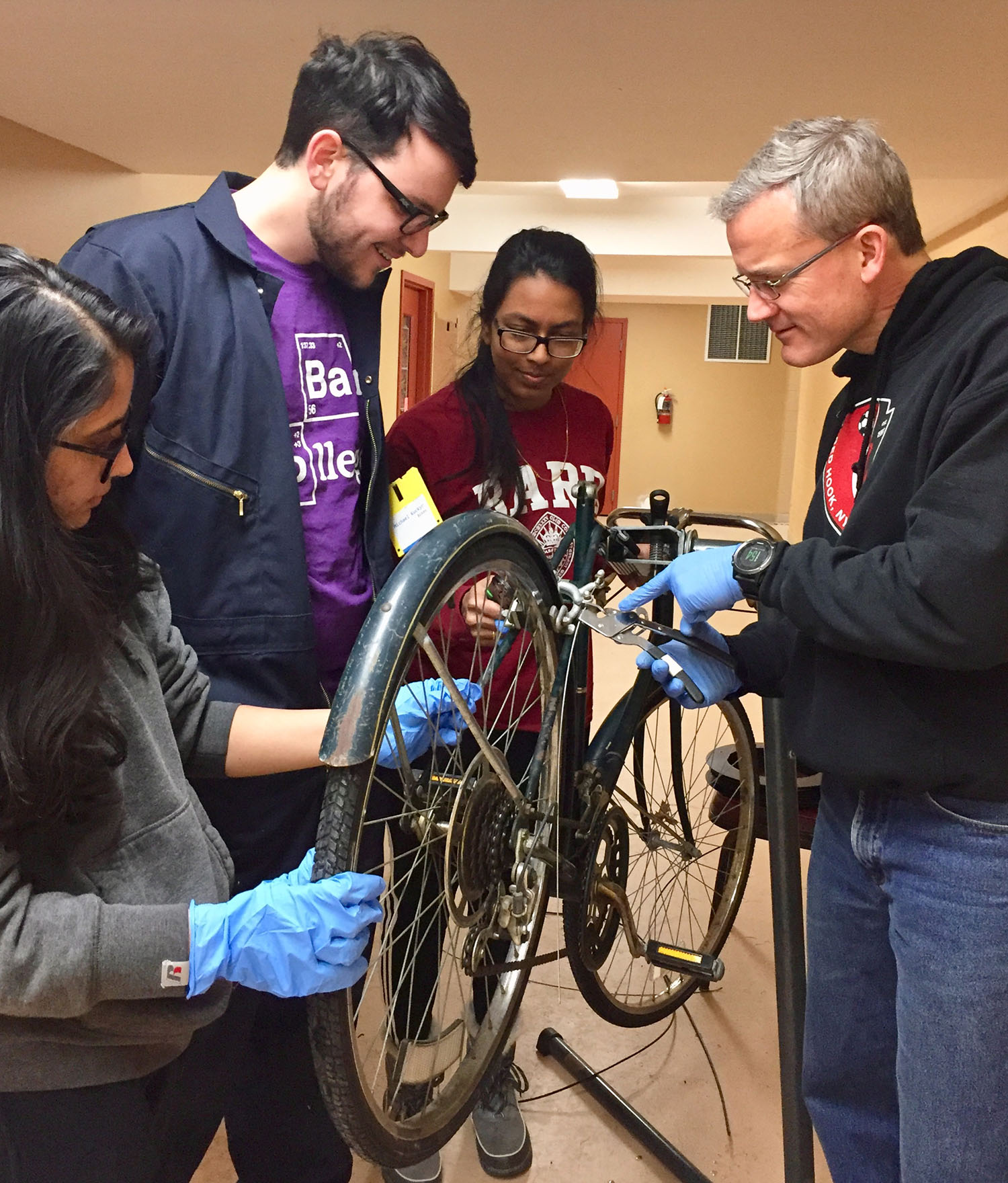
A keystone of this year’s day of service was the Red Hook Community Fair, “Beyond Recycling: Repair, Re-Use, Rethink and Commit to Community.” More than 30 Bard students participated at the Red Hook Community Center in a day that included sustainable crafts, cooking and science activities, and opportunities to sign up to volunteer with local organizations.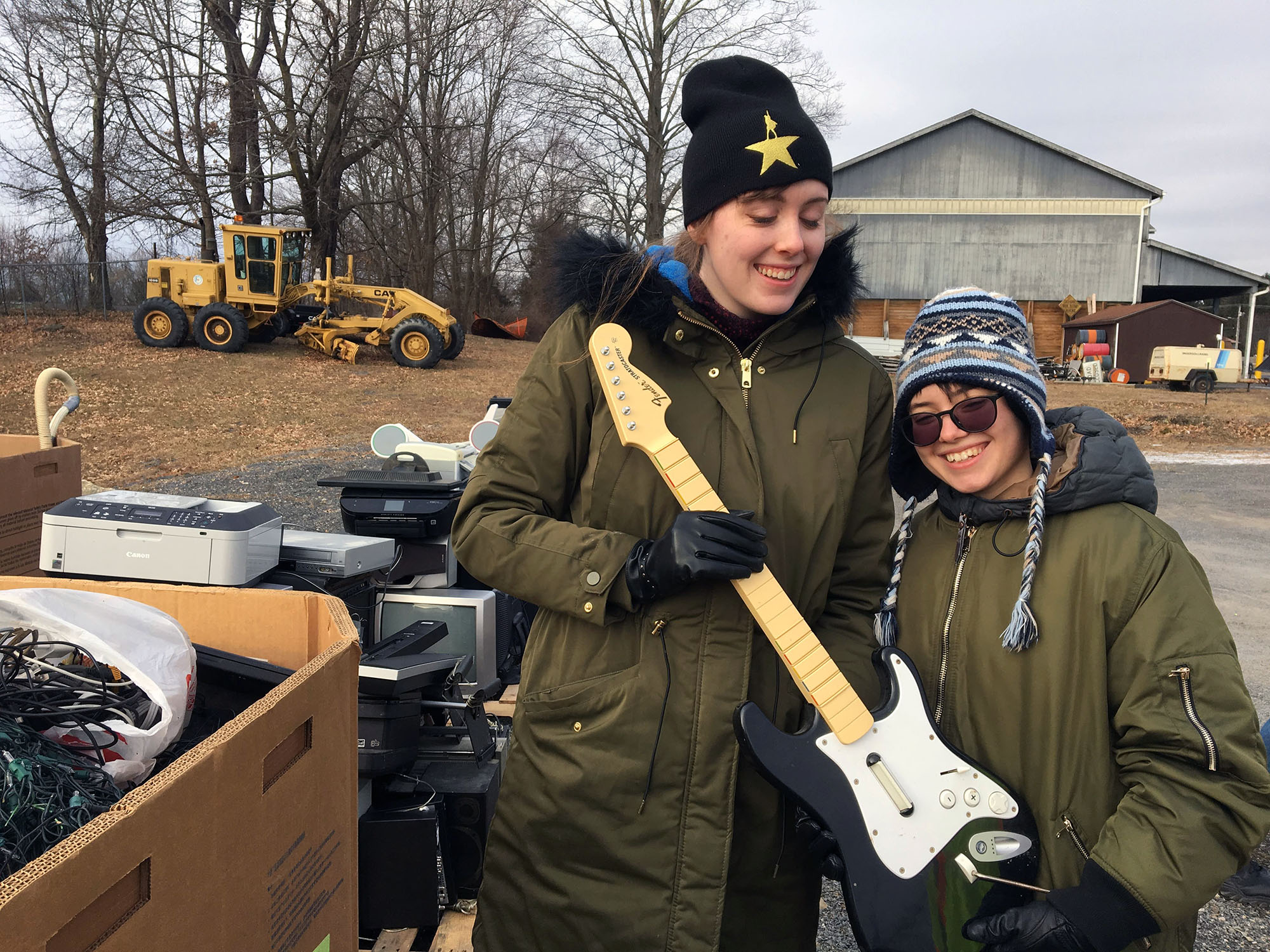
The organizers also added “Commit to Action,” a mini-conference in Olin Auditorium. Led by local organizers and campus leaders, participants chose from 15 workshops aimed at helping them commit to action in 2019. Making a yearlong commitment was a theme of this year’s MLK Day of Engagement. Organizers emphasized the many ways students could be involved with on- or off-campus groups beyond the holiday weekend. Facilitators focused on helping students build skills to effect change. Workshops included “Literacy for Adolescents: Tutoring as Social Change” and “Getting to Climate Drawdown: The Campus as Learning Lab.”
The conference also featured a panel of local leaders in a conversation that connected their personal stories with their civic action. Panelists included Matthew Martini, Northern Hudson Valley regional representative to the State Comptroller’s Office; Sarah Salem, Poughkeepsie Common Council member; Leslie Tracey, cofounder of the Hudson Valley African American Business Council; Rev. Giancarlo Llaverias, Dutchess County legislator; and Cammie Jones, assistant dean of civic engagement at Bard College.
Bard students worked at more than two dozen sites over the long weekend, ranging from Tomorrow, Tomorrow Animal Rescue outside Hudson to the United Methodist Food Pantry in Red Hook. On Saturday, Bardians continued an annual tradition of donning work gloves and hauling old TVs, stereos, computer towers, and other electronic waste for Red Hook’s E-Waste Day.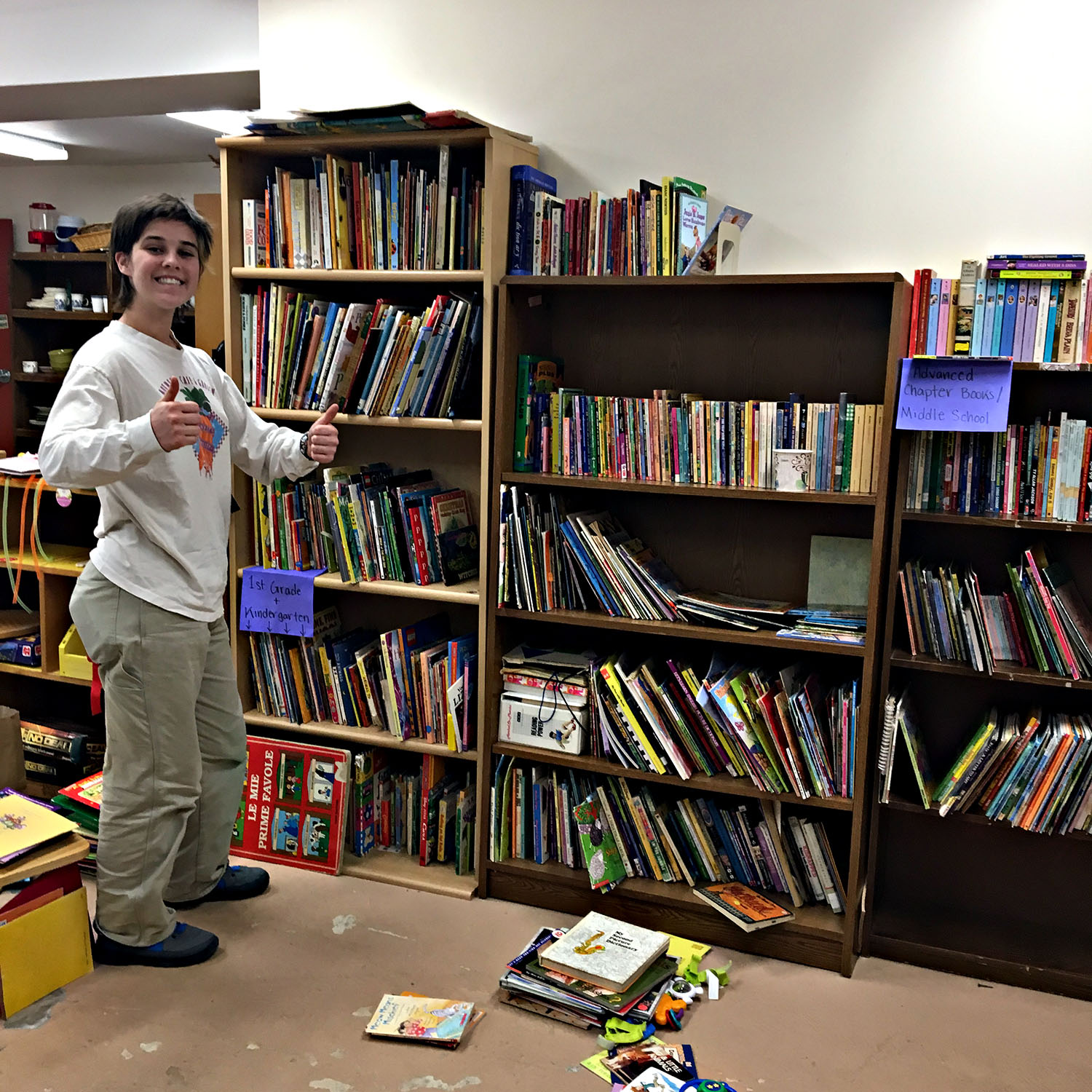
In January, Bard science outreach kicks into high gear in conjunction with the Citizen Science program, culminating in a flurry of events around the King holiday. Science outreach activities take place all year through Bard’s Center for Civic Engagement, in which student leaders conduct STEM games and experiments in the Hudson Valley school districts. Volunteers and engagement fellows from CCE gave lessons to local children in conjunction with other student-led science activities around this year’s Citizen Science topic: water.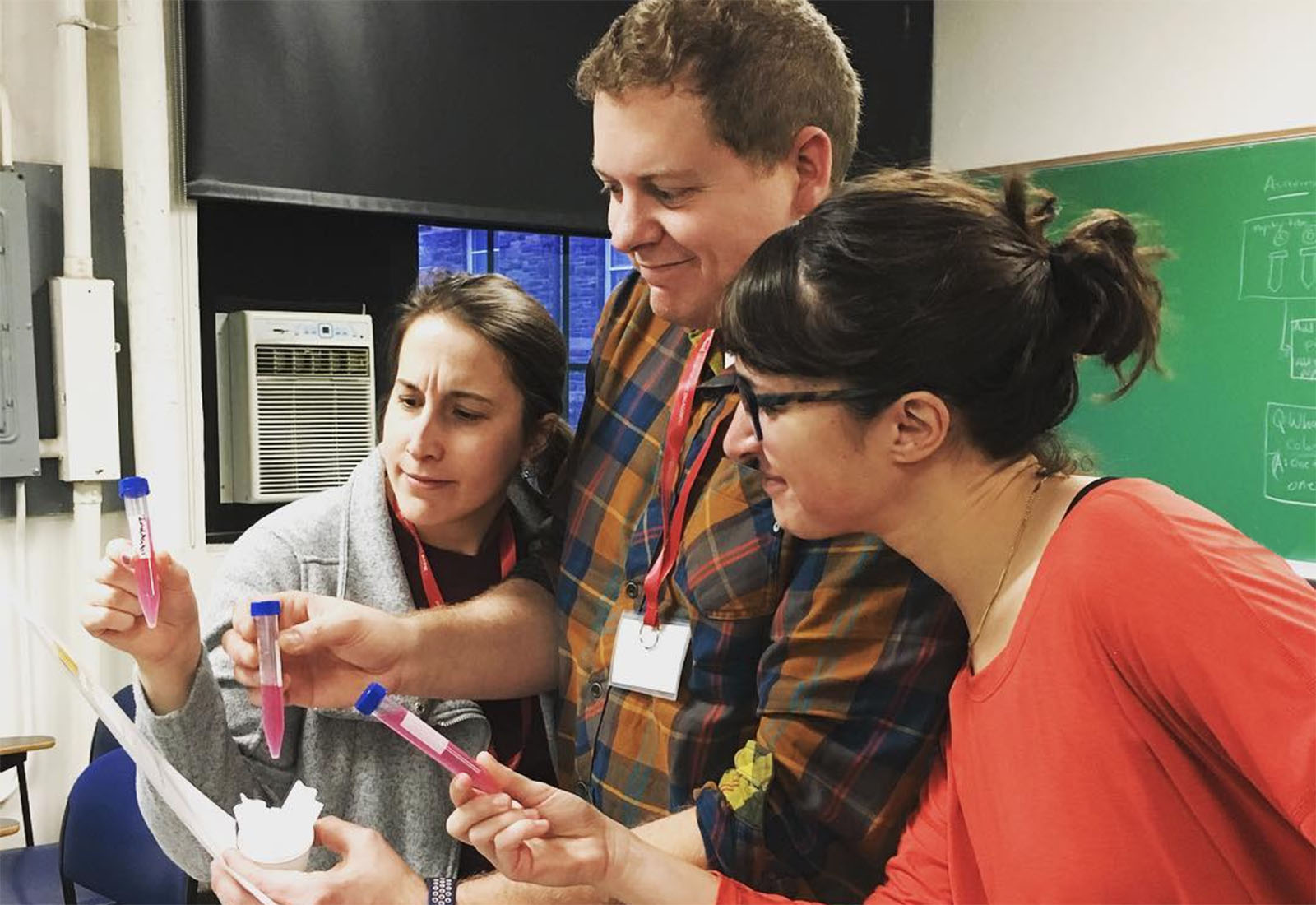
Read more about the day’s events on the CCE website.
MLK Day of Service activities expanded this year. In previous years, Bard's service projects have taken place on the Saturday before Martin Luther King Day. This year, the program shifted to focus events on the holiday itself, in alignment with national organizing and celebration. Related events occurred all weekend, however.

At the Repair Cafe in Red Hook, Bard students and local volunteers fix bicycles.
A keystone of this year’s day of service was the Red Hook Community Fair, “Beyond Recycling: Repair, Re-Use, Rethink and Commit to Community.” More than 30 Bard students participated at the Red Hook Community Center in a day that included sustainable crafts, cooking and science activities, and opportunities to sign up to volunteer with local organizations.

Bard Students volunteer at Red Hook's annual E-Waste Day.
The organizers also added “Commit to Action,” a mini-conference in Olin Auditorium. Led by local organizers and campus leaders, participants chose from 15 workshops aimed at helping them commit to action in 2019. Making a yearlong commitment was a theme of this year’s MLK Day of Engagement. Organizers emphasized the many ways students could be involved with on- or off-campus groups beyond the holiday weekend. Facilitators focused on helping students build skills to effect change. Workshops included “Literacy for Adolescents: Tutoring as Social Change” and “Getting to Climate Drawdown: The Campus as Learning Lab.”
The conference also featured a panel of local leaders in a conversation that connected their personal stories with their civic action. Panelists included Matthew Martini, Northern Hudson Valley regional representative to the State Comptroller’s Office; Sarah Salem, Poughkeepsie Common Council member; Leslie Tracey, cofounder of the Hudson Valley African American Business Council; Rev. Giancarlo Llaverias, Dutchess County legislator; and Cammie Jones, assistant dean of civic engagement at Bard College.
Bard students worked at more than two dozen sites over the long weekend, ranging from Tomorrow, Tomorrow Animal Rescue outside Hudson to the United Methodist Food Pantry in Red Hook. On Saturday, Bardians continued an annual tradition of donning work gloves and hauling old TVs, stereos, computer towers, and other electronic waste for Red Hook’s E-Waste Day.

A Bard student volunteer organizes the books in the community closet at the Red Hook Community Center.
In January, Bard science outreach kicks into high gear in conjunction with the Citizen Science program, culminating in a flurry of events around the King holiday. Science outreach activities take place all year through Bard’s Center for Civic Engagement, in which student leaders conduct STEM games and experiments in the Hudson Valley school districts. Volunteers and engagement fellows from CCE gave lessons to local children in conjunction with other student-led science activities around this year’s Citizen Science topic: water.

Student engagement fellows train Citizen Science faculty on their water-themed outreach experiments.
Read more about the day’s events on the CCE website.
Photo: (L–R) “Commit to Action” panelists Matthew Martini, Sarah Salem,
Leslie Tracey, Rev. Giancarlo Llaverias, and Cammie Jones.
Meta: Type(s): Event | Subject(s): Education,Environmental/Sustainability,Student,Wellness | Institutes(s): Bard Undergraduate Programs,Center for Civic Engagement,Citizen Science |
Leslie Tracey, Rev. Giancarlo Llaverias, and Cammie Jones.
Meta: Type(s): Event | Subject(s): Education,Environmental/Sustainability,Student,Wellness | Institutes(s): Bard Undergraduate Programs,Center for Civic Engagement,Citizen Science |
December 2018
12-13-2018
Multimedia artist Julia Christensen took video cameras to Lake Erie to document the ice that keeps the lake healthy—and what its absence could mean in the future.
Photo: (L–R) “Commit to Action” panelists Matthew Martini, Sarah Salem,
Leslie Tracey, Rev. Giancarlo Llaverias, and Cammie Jones.
Meta: Type(s): Alumni | Subject(s): Bardians at Work,Division of Science, Math, and Computing,Division of the Arts,Environmental/Sustainability | Institutes(s): Bard Undergraduate Programs |
Leslie Tracey, Rev. Giancarlo Llaverias, and Cammie Jones.
Meta: Type(s): Alumni | Subject(s): Bardians at Work,Division of Science, Math, and Computing,Division of the Arts,Environmental/Sustainability | Institutes(s): Bard Undergraduate Programs |
12-04-2018
Bard MBA student Alexandra Criscuolo was featured in Forbes for her work at Kickstarter developing a one-stop-shop of resources on how to assess and adopt sustainability efforts.
Photo: (L–R) “Commit to Action” panelists Matthew Martini, Sarah Salem,
Leslie Tracey, Rev. Giancarlo Llaverias, and Cammie Jones.
Meta: Type(s): Student | Subject(s): Environmental/Sustainability | Institutes(s): Bard MBA in Sustainability |
Leslie Tracey, Rev. Giancarlo Llaverias, and Cammie Jones.
Meta: Type(s): Student | Subject(s): Environmental/Sustainability | Institutes(s): Bard MBA in Sustainability |
November 2018
11-07-2018
The two-story prefab, designed by MB Architecture, is home to Bard’s Center for Experimental Humanities.
Photo: (L–R) “Commit to Action” panelists Matthew Martini, Sarah Salem,
Leslie Tracey, Rev. Giancarlo Llaverias, and Cammie Jones.
Meta: Subject(s): Environmental/Sustainability | Institutes(s): Bard Undergraduate Programs |
Leslie Tracey, Rev. Giancarlo Llaverias, and Cammie Jones.
Meta: Subject(s): Environmental/Sustainability | Institutes(s): Bard Undergraduate Programs |
October 2018
10-15-2018
Study, Reported in the Journal Nature Sustainability, Led by Felicia Keesing of Bard College and Brian Allan of the University of Illinois
A study of 3,588 square kilometers of privately owned land in central Kenya offers evidence that humans and their livestock can, in the right circumstances, share territory with zebras, giraffes, elephants and other wild mammals—to the benefit of all.
The study, reported in the journal Nature Sustainability, focused on Laikipia County in central Kenya.
“Laikipia County hosts 10 percent of Kenya’s wildlife, but none of the country’s national parks or preserves,” says University of Illinois entomology professor Brian Allan, who led the study with Bard College professor Felicia Keesing. “Most people depend on livestock for income and almost 70 percent of the land is devoted to large-scale ranching or pastoralism.”
As human populations increase, so does the pressure to expand agricultural and pastoral areas into grasslands now dominated by wildlife.
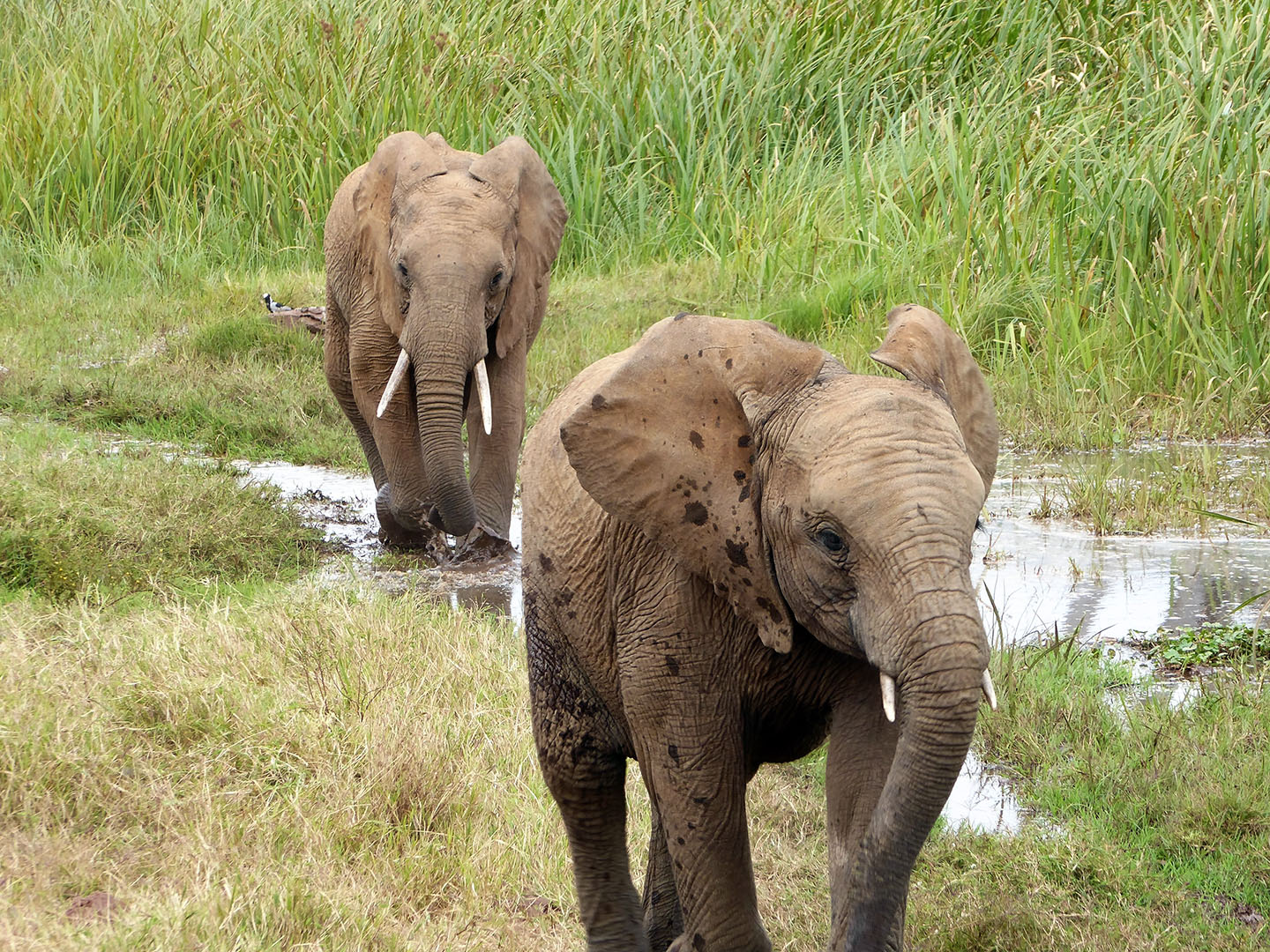 Wildlife tourism is another source of revenue for landowners, however, as the area hosts exotic white and black rhinoceroses, Grevy’s zebras, and painted dogs, notes Keesing.
Wildlife tourism is another source of revenue for landowners, however, as the area hosts exotic white and black rhinoceroses, Grevy’s zebras, and painted dogs, notes Keesing.
“This is leading some to remove traditional barriers between livestock and wildlife because there are benefits to having multiple sources of income,” she says.
There are big potential downsides to allowing livestock and wildlife to share territory, however, the researchers say. Wild cats sometimes prey on domestic animals. Wildlife and livestock may compete for water and grazing resources. They also can share diseases, including tick-borne infections like East Coast fever, Q fever, and bovine anaplasmosis.
“There is no greater diversity of tick species anywhere on the earth than in eastern and southern Africa,” Allan says. “And many of the ticks are host generalists, meaning they’ll happily feed on a cow, a gazelle or a zebra—and they’ll also bite humans.”
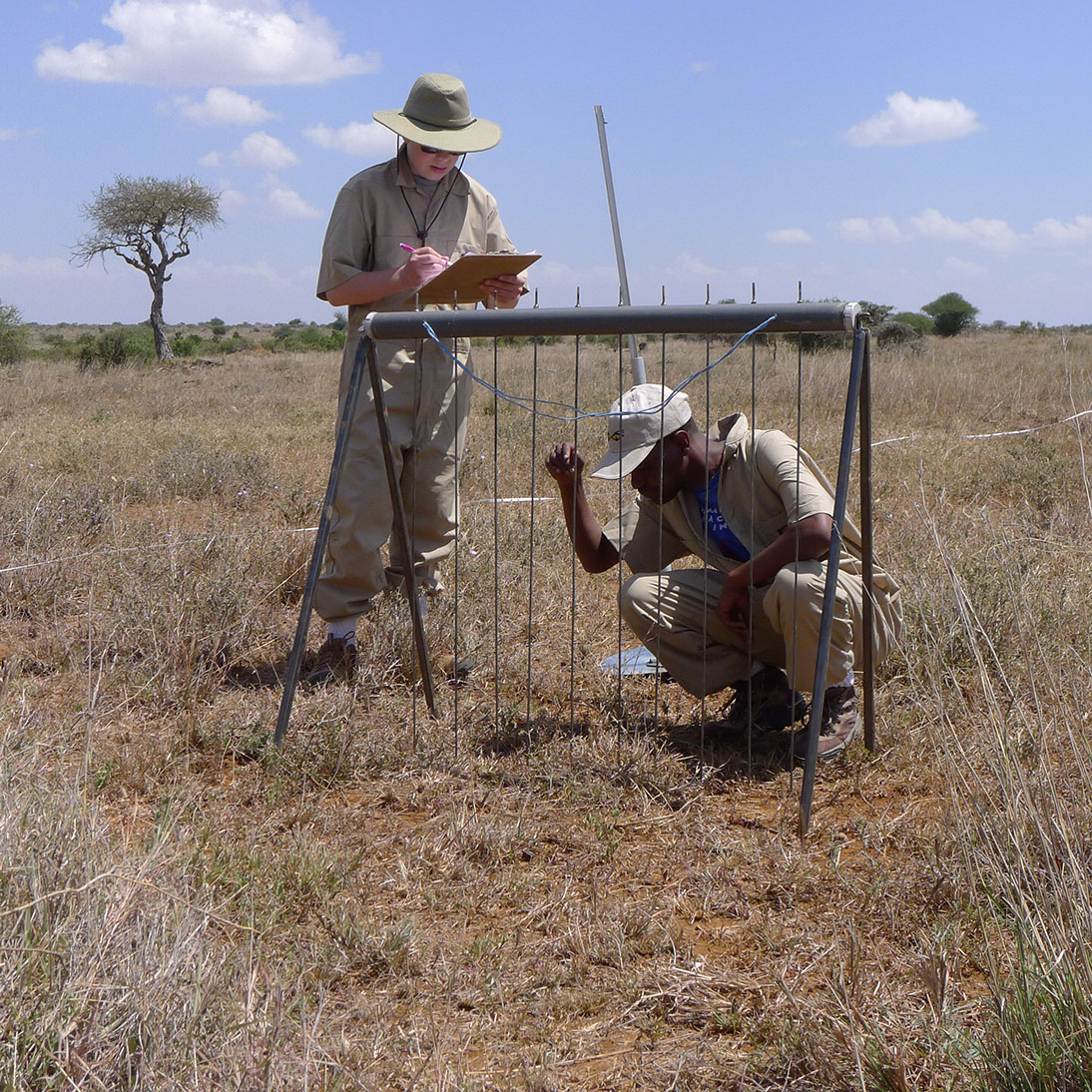 To determine the ecological and economic effects of raising livestock on territory also used by wildlife, the researchers surveyed tick abundance, vegetation, and the dung of large herbivorous mammals on 23 Laikipia County properties during July and August in 2014 and 2015.
To determine the ecological and economic effects of raising livestock on territory also used by wildlife, the researchers surveyed tick abundance, vegetation, and the dung of large herbivorous mammals on 23 Laikipia County properties during July and August in 2014 and 2015.
“We identified the ticks and sequenced DNA of tick-borne pathogens to identify infectious agents associated with the ticks,” says Keesing. The team also interviewed managers and owners of each property about the type and abundance of livestock on their land and the percentage of revenue derived from wildlife tourism and livestock operations.
The researchers found that the practice of regularly spraying cattle with acaricides, which kill ticks without directly endangering birds or other creatures that feed on ticks, dramatically reduced the number of ticks in the grazed areas.
“Reducing the number of ticks is one key part of a strategy to reduce the transmission of tick-borne diseases,” says Keesing. “These diseases can sicken and kill people, livestock, and wildlife, which is particularly devastating in a vulnerable ecosystem experiencing many competing demands.”
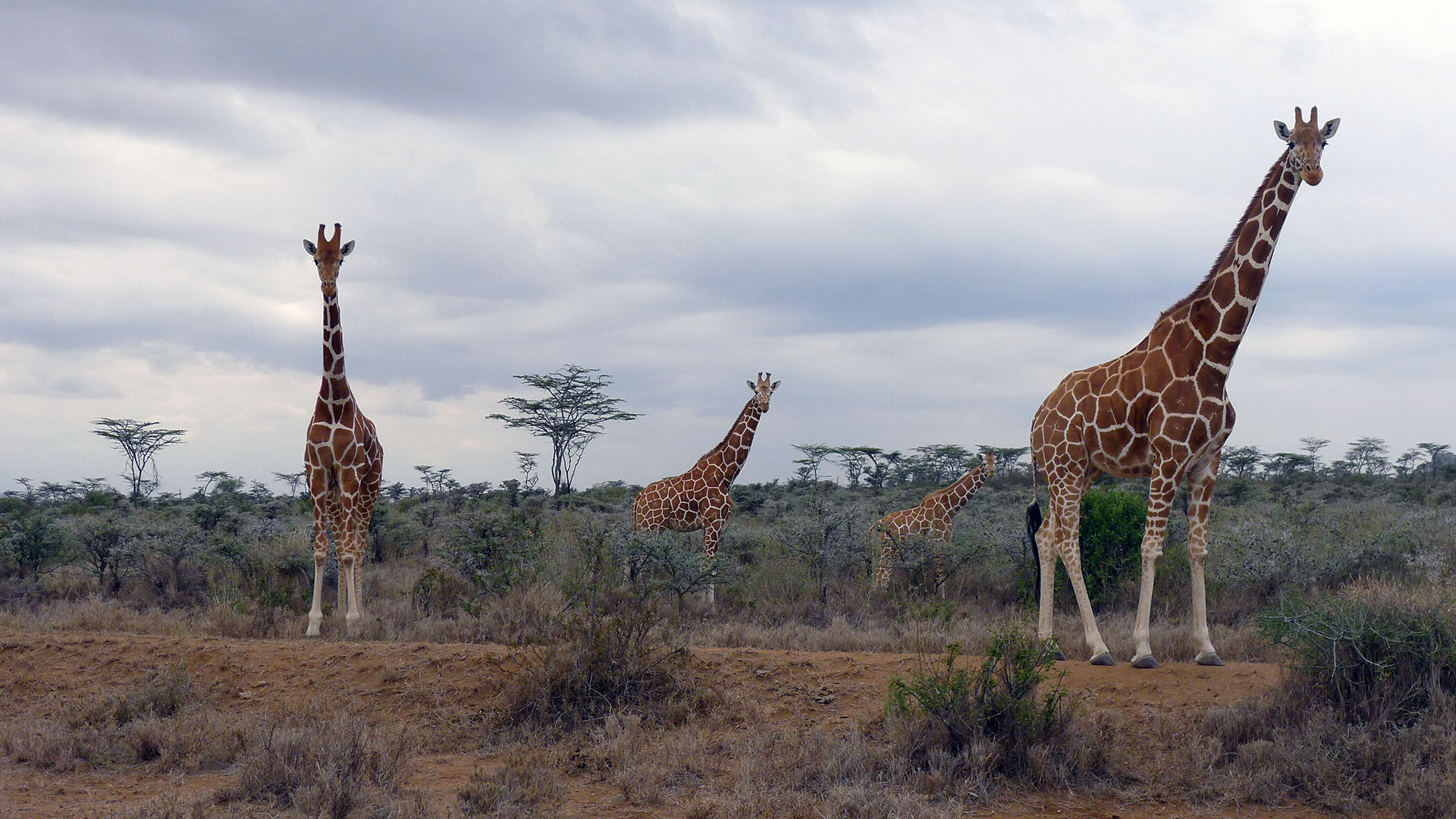 About 16 percent of the ticks collected at the study sites carried at least one bacterial or protozoal infection, the scientists found. There was no difference in the proportion of infected ticks found on properties devoted entirely to wildlife and those where wildlife and livestock were integrated. Tick abundance, however, was 75 percent lower on integrated properties than on those hosting only wildlife.
About 16 percent of the ticks collected at the study sites carried at least one bacterial or protozoal infection, the scientists found. There was no difference in the proportion of infected ticks found on properties devoted entirely to wildlife and those where wildlife and livestock were integrated. Tick abundance, however, was 75 percent lower on integrated properties than on those hosting only wildlife.
Livestock- and wildlife-related income accounted for more than 70 percent of revenue for the properties studied. Wildlife abundance was highest on properties with moderate densities of cattle—but not on land supporting sheep and goats, the researchers found. There was also less green grass on livestock-only and wildlife-only properties than on land shared by both, and the quality of the forage was highest on integrated lands.
These findings suggest that certain management practices can enhance the viability of livestock operations while also maximizing wildlife abundance and health on the same lands, the researchers say.
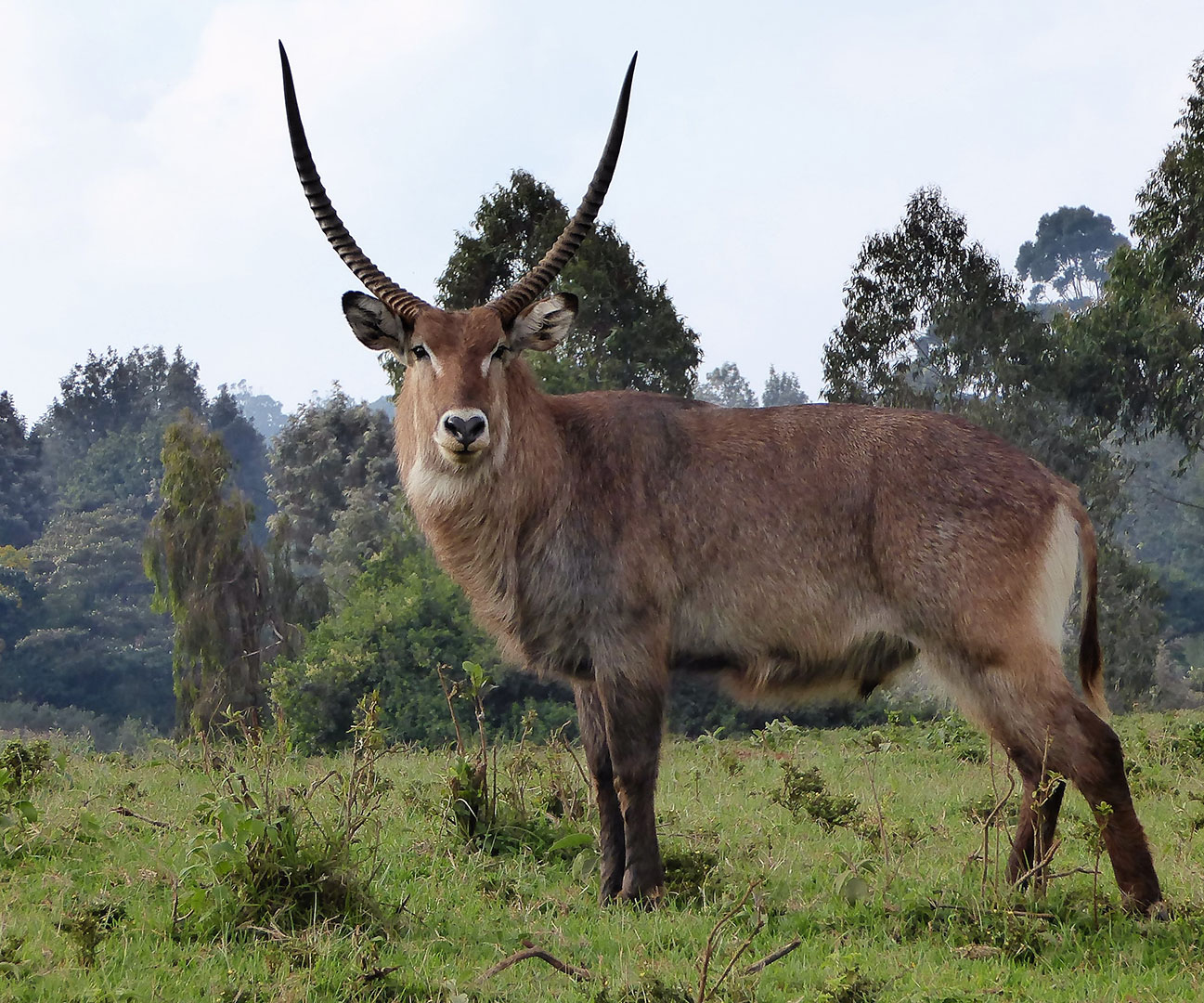 “It has been the attitude of conservationists that conservation lands must be kept secure and undisturbed from human uses, including livestock production, and I can sympathize with that perspective,” Allan says. “But our data are starting to suggest that there could be circumstances where livestock-wildlife integration can work—for the benefit of all. A productive savanna ecosystem may be the perfect place to try it.”
“It has been the attitude of conservationists that conservation lands must be kept secure and undisturbed from human uses, including livestock production, and I can sympathize with that perspective,” Allan says. “But our data are starting to suggest that there could be circumstances where livestock-wildlife integration can work—for the benefit of all. A productive savanna ecosystem may be the perfect place to try it.”
“This project demonstrates that research on the complex interactions of natural and human systems can foster innovative management strategies to preserve environmental quality and economic productivity,” says Tom Baerwald, a program director for the National Science Foundation’s Dynamics of Coupled Natural and Human Systems program, which funded the research. “The findings are applicable in many parts of the United States and in other regions around the world."
The National Science Foundation and the University of Illinois at Urbana-Champaign support this research.
For more information, visit dx.doi.org/10.1038/s41893-018-0149-2.
A study of 3,588 square kilometers of privately owned land in central Kenya offers evidence that humans and their livestock can, in the right circumstances, share territory with zebras, giraffes, elephants and other wild mammals—to the benefit of all.
The study, reported in the journal Nature Sustainability, focused on Laikipia County in central Kenya.
“Laikipia County hosts 10 percent of Kenya’s wildlife, but none of the country’s national parks or preserves,” says University of Illinois entomology professor Brian Allan, who led the study with Bard College professor Felicia Keesing. “Most people depend on livestock for income and almost 70 percent of the land is devoted to large-scale ranching or pastoralism.”
As human populations increase, so does the pressure to expand agricultural and pastoral areas into grasslands now dominated by wildlife.

“This is leading some to remove traditional barriers between livestock and wildlife because there are benefits to having multiple sources of income,” she says.
There are big potential downsides to allowing livestock and wildlife to share territory, however, the researchers say. Wild cats sometimes prey on domestic animals. Wildlife and livestock may compete for water and grazing resources. They also can share diseases, including tick-borne infections like East Coast fever, Q fever, and bovine anaplasmosis.
“There is no greater diversity of tick species anywhere on the earth than in eastern and southern Africa,” Allan says. “And many of the ticks are host generalists, meaning they’ll happily feed on a cow, a gazelle or a zebra—and they’ll also bite humans.”

“We identified the ticks and sequenced DNA of tick-borne pathogens to identify infectious agents associated with the ticks,” says Keesing. The team also interviewed managers and owners of each property about the type and abundance of livestock on their land and the percentage of revenue derived from wildlife tourism and livestock operations.
The researchers found that the practice of regularly spraying cattle with acaricides, which kill ticks without directly endangering birds or other creatures that feed on ticks, dramatically reduced the number of ticks in the grazed areas.
“Reducing the number of ticks is one key part of a strategy to reduce the transmission of tick-borne diseases,” says Keesing. “These diseases can sicken and kill people, livestock, and wildlife, which is particularly devastating in a vulnerable ecosystem experiencing many competing demands.”

Livestock- and wildlife-related income accounted for more than 70 percent of revenue for the properties studied. Wildlife abundance was highest on properties with moderate densities of cattle—but not on land supporting sheep and goats, the researchers found. There was also less green grass on livestock-only and wildlife-only properties than on land shared by both, and the quality of the forage was highest on integrated lands.
These findings suggest that certain management practices can enhance the viability of livestock operations while also maximizing wildlife abundance and health on the same lands, the researchers say.

“This project demonstrates that research on the complex interactions of natural and human systems can foster innovative management strategies to preserve environmental quality and economic productivity,” says Tom Baerwald, a program director for the National Science Foundation’s Dynamics of Coupled Natural and Human Systems program, which funded the research. “The findings are applicable in many parts of the United States and in other regions around the world."
The National Science Foundation and the University of Illinois at Urbana-Champaign support this research.
For more information, visit dx.doi.org/10.1038/s41893-018-0149-2.
Photo: Bard professor Felicia Keesing with her son and colleagues in Kenya.
Photos by Felicia Keesing.
Meta: Subject(s): Division of Science, Math, and Computing,Environmental and Urban Studies Program,Environmental/Sustainability | Institutes(s): Bard Undergraduate Programs |
Photos by Felicia Keesing.
Meta: Subject(s): Division of Science, Math, and Computing,Environmental and Urban Studies Program,Environmental/Sustainability | Institutes(s): Bard Undergraduate Programs |
10-15-2018
The study, reported in the journal Nature Sustainability, was led by Felicia Keesing of Bard College and Brian Allan of the University of Illinois.
Meta: Type(s): Faculty | Subject(s): Division of Science, Math, and Computing,Environmental/Sustainability | Institutes(s): Bard Undergraduate Programs |
Meta: Type(s): Faculty | Subject(s): Division of Science, Math, and Computing,Environmental/Sustainability | Institutes(s): Bard Undergraduate Programs |